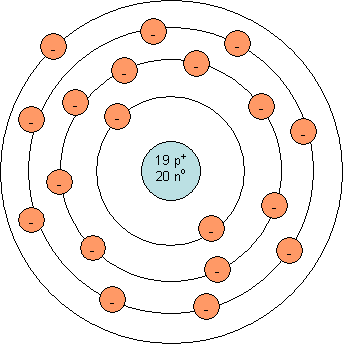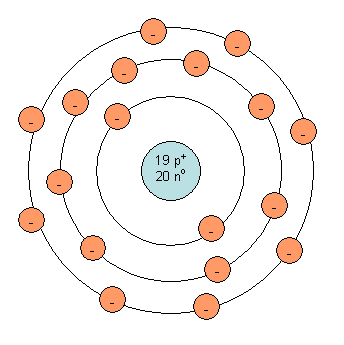Competency #6
Answer and Explanation
![]()
Bohr model for a neutral potassium atom:

Note: The number of neutrons in the nucleus will vary from one potassium atom to the next. The isotope shown is potassium-39, which is the most common isotope of potassium and has 20 neutrons and a mass number of 39.
As you can see, a neutral potassium ion does not have a full outer shell. It is quite easy for potassium to lose one electron. Once this happens, the outermost occupied shell is full (see diagram below). This ion contains 19 protons and 18 electrons (1 less than the neutral atom). Since it contains 19 positively charged protons and 18 negatively charged electrons, it has a charge of +1. This is the reason potassium tends to form K1+.
Bohr model for a potassium ion:

© 2008 Anne Arundel Community College